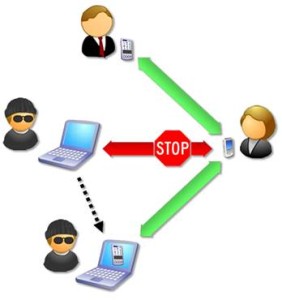 Think you don’t know what spoofing is? Think again. You’re probably all too familiar with it and don’t even know it. “Spoofing” is when you get an email from someone you know, but the body of the email is either just a link to a website or some weird gibberish.
Think you don’t know what spoofing is? Think again. You’re probably all too familiar with it and don’t even know it. “Spoofing” is when you get an email from someone you know, but the body of the email is either just a link to a website or some weird gibberish.
Although it’s not necessarily a virus, clicking the link in the email or downloading an attachment from it very well may give you one. Spoofing is when someone uses somebody else’s email address to send an email. For example, if I were to write a letter to William using Elizabeth’s return address, William would think he got something cool from Elizabeth and open it—which is exactly what spoofers are counting on.
So how, exactly, does this happen? Well, you remember all those “forward to 10 people and you will receive 7 years good luck and a boatload of money” emails? Spoofers manage to get those email addresses and go to town with them.
So what can you do to protect yourself from spoofers? Not a whole lot, unfortunately, although there are some tips to always keep in mind:
1. Never forward junk email!
2. Get a free account (such as Yahoo, Gmail, or Hotmail) to use only for your online transactions and login info (such as for iTunes and Facebook). Never use your personal email address to sign in to anything.
3. If an email looks strange, ask the person who sent it to you if it’s actually from them—IN A NEW EMAIL. Do not forward the questionable email back to the person who sent it to you. If it’s not from them, DELETE IT.
4. After deleting the spoofing email, clean your deleted items folder.
PC Technika provides email filters for custom domains that can quarantine these spoofing emails. Contact us at 919-741-6114 or via email at info@pctechnika.com so we can get you started.

